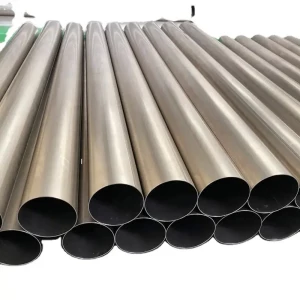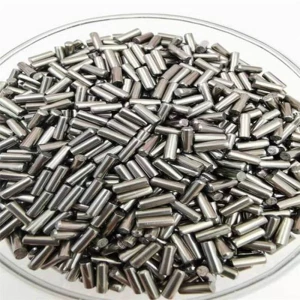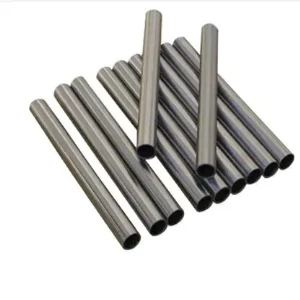Ruthenium-iridium titanium anode for electrolytic salt water
|
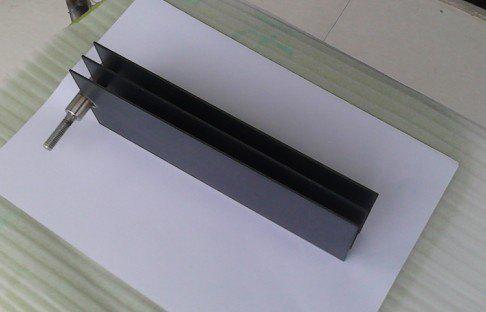
|
About Titanium Anode
| Titanium Substrate | Grade | N | C | H | Fe | O | Ti |
| 1 | 0.03 | 0.08 | 0.015 | 0.2 | 0.18 | bal | |
| 2 | 0.03 | 0.05 | 0.015 | 0.3 | 0.25 | bal | |
| Regular Coating |
Platinum:0.5um/1um; Mixed Iridium and Platinum:0.5um/1um; Mixed Ruthenium and Iridium:6-8um; Mixed Iridium and Tantalum:6-8um. |
||||||
| Characteristics |
Coating: Mixed Ruthenium and Iridium; Chlorine evolution potential: <1.13V; Polarizability: ≤40mv; Accelerated life: ≥3000min under current density 1000A/m2; Anode strengthening weightlessness: ≤10mg; Suitable working environment: Solution contains Cl-, PH<=7 |
||||||
| Coating contents & life span |
8 grams/m2: >6,000 hours; 10 grams/m2: > 8,000 hours; 12 grams/m2: >10,000 hours; 15 grams/m2: >12,000 hours; 20 grams/m2: >15,000 hours |
||||||
| Working parameters |
Current density: <600A/m2; Temperature: 40-60°C; Chlorine concentration: About 30~50grams/liter; Polarity reversal: suitable; Reversal frequency: 2-4 hours |
||||||
| Regular sizes |
63.5*150mm, 13pcs/set; 64*110mm, 7pcs/set; 80*120mm, 1pcs/set; 30*183mm, 7pcs/set; 80*185mm, 7pcs/set |
||||||
| Applications |
1.Water ionizer or water electrolysis a. Making alkaline and acidic water
2.Waste water treatment a.Organic sewage treatment, b. Chemical sewage treatment, c. Pesticide sewage treatment, d. Drinking water disinfection, e. Bleaching & dyeing, f. Swimming pool g. Hospital sewage treatment, h. Food industry disinfection etc.
3.Sodium Hypochlorite Generator & Chlorinator a. Swimming pool water treatment b. Water sterilization & water purification,
4.Sea water electrolysis or Electrodialysis a. Desalination, b. Material recycling in the waste water, c. Paper making, *Chemical, medical industry, d. Light industry, *Metallurgy, e. Making fresh water, etc.
5.Chlor-Alkali Industry
|
||||||
Application Principle
The ruthenium-iridium-titanium electrode is used to electrolyze the brine, because electrolytic sodium chloride is equivalent to electrolytic sodium chloride and water, and the reaction at the anode is: Cl ion loses electrons to generate Cl2, and the cathode is hydrogen ion to generate electrons to generate hydrogen, then the following occurs Reaction; H2O + Cl2 = HClO + HCl;
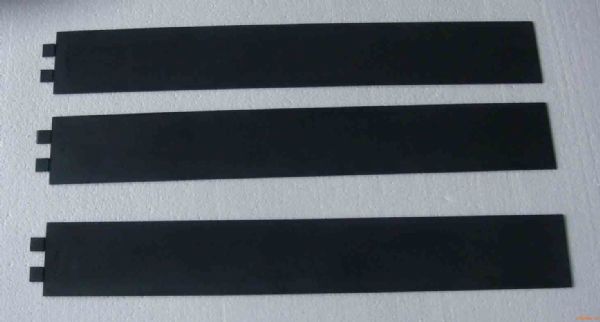
The steps of technical solution one are:
a. Electrolysis of the NaCl solution in a diaphragmless manner, so that the molar ratio of NaCl to NaClO in the resulting solution after electrolysis is> 1: 1;
b. The electrolytic production solution prepared in step a is further electrolyzed on the anode side of the ion membrane electrolytic cell, and the HCl generated after the electrolysis is used to neutralize the NaClO generated in step a to form HClO.
The steps of technical solution two are:
a. Electrolysis of the NaCl solution in a diaphragmless manner, so that NaCl is converted into NaClO **;
b. Electrolyze NaCl solution under ion membrane mode, generate HClO and HCl on the anode side;
c. Proportionally mixing the anode-side electrolytic production liquids in steps a and b, so that the HCl generated in step b and the NaClO generated in step a form HClO.
The above two methods can prepare a disinfecting solution with high hypochlorous acid content, appropriate acidity, and low salt residue.
Ruthenium used in the manufacture of anodes employed in the electrolytic production of chlorine. These are titanium anodes, coated with ruthenium oxide or, occasionally, a platinum–iridium alloy, more recently an iridium–ruthenium alloy.
Anodes with mixed metal oxide (MMO) coating mostly consist of the base material titanium or niobium onto which precious metal oxides of the platinum metals group with other valve metals are applied. Usually iridium mixed oxide coatings are used for chloride-free electrolytes, whereas ruthenium or iridium/ruthenium mixed oxide coatings are used for the production of chlorine and hypochlorite. Ruthenium Oxide coated Titanium Anodes are used in electroplating, water treatment, and other electronic applications.
Coating are two main anodic reaction families and they are:
The production of Chlorine (Cl2) from solutions containing Chlorides (Cl-) according to the electrochemical reaction:
Cl- + e- —-> Cl2
The production of Oxygen (O2) from acid solutions containing mainly Nitrates, Sulphates according to the electrochemical reaction:
2H2O —-> O2 + 2e- + 2H+
The coating is very thin layer, typically just a few microns, made of noble metal oxides part of the Platinum family, that covers the titanium’s surface where the anodic reaction takes place. We use primarily Ruthenium and Iridium, mixed, depending on the application, with other metals from the same family: Palladium, Rhodium, Platinum.
Titanium family’s oxides are part of the coating’s formula as well: Titanium, Tantalum, Niobium. They serve the purpose to make the structure more compact and adherent to the Titanium base and at the same time provide a protective function against the aggressiveness of some solutions the electrodes need to work in.
The formation of the coating takes place through the application of a solution of the above elements and a subsequent high temperature thermal treatment to create the oxide. Each application or “coat” is a cycle during which a fraction of the coating’s quantity settles. The number of cycles is subject to the final noble metal’s load, which, in turn, is in relation to the type of application it is designed for.
Application:
Caustic soda production, use diaphragm process to produce alkali, chlorate industry, organic synthesis, sodium hypochlorite production, sea water electrolysis, electrowinning nonferrous metal, produce chlorine by electrolysis, metal plating., ect.
TNTI produce Ruthenium coated Titanium Anodes in high purity forms and follows applicable ASTM testing standards; a range of grades are available including ACS, Reagent and Technical Grade, Food, Agricultural and Pharmaceutical Grade.
Properties:
High anti-erosion, High current efficiency, long service life, light, floor can be recycled after electrodes lose activity
We can also produce materials to custom specifications by request, in addition to custom compositions for commercial and research applications and new proprietary technologies.
Contact us and we can discuss your specific application with you. We will gladly assist you.
Nous avons plus de catégories pour vous. Si vous ne pouvez pas trouver les produits que vous voulez ci-dessus, remplissez simplement le formulaire et dites-nous quels produits vous voulez importer de Chine.



